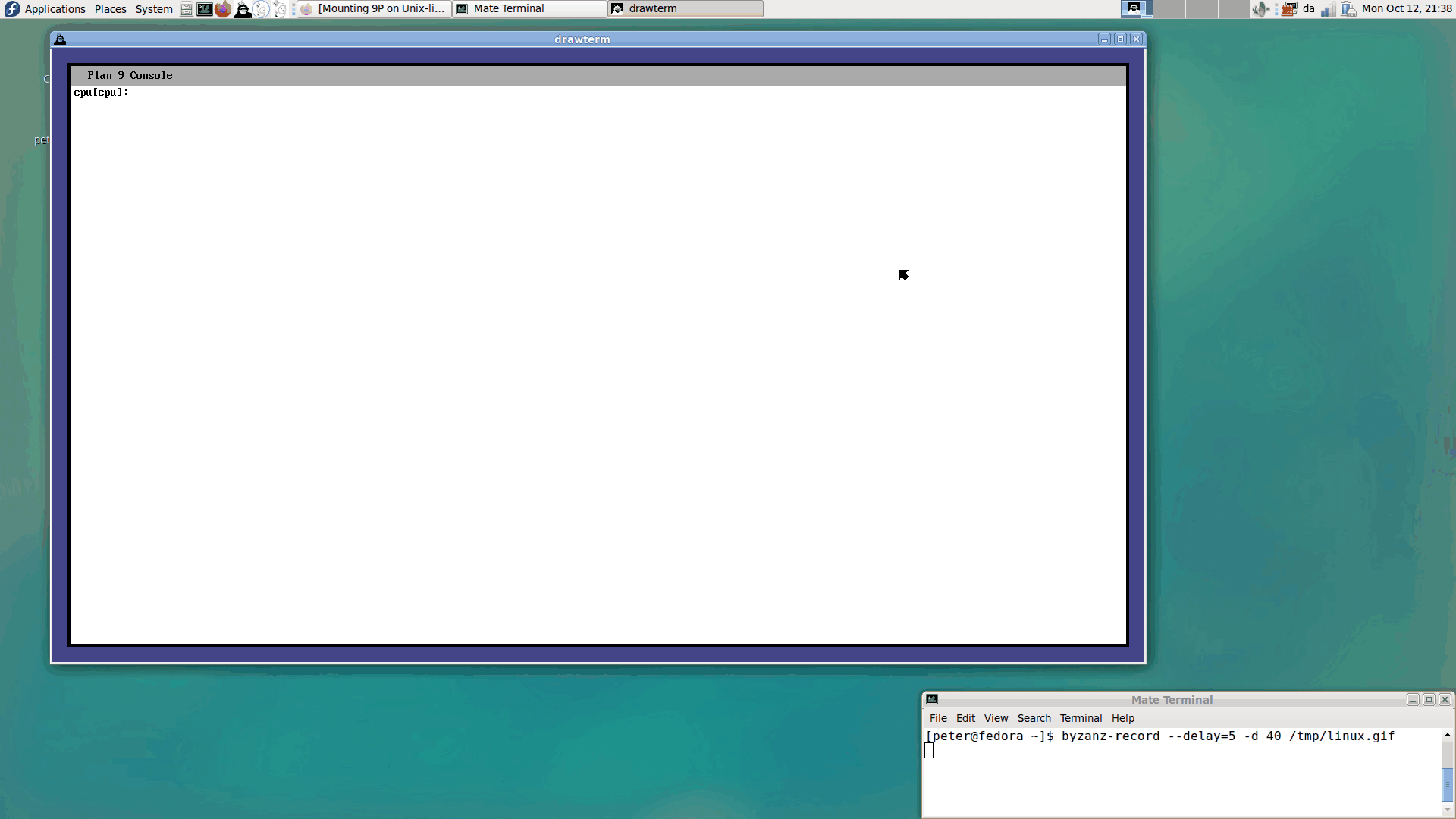Mounting a 9P connection over drawterm
I sometimes use drawterm on linux to connect to my 9front server. While it is possible to access the host system's files under /mnt/term, there is no builtin way to access the remote system's file under linux. Now, why would anybody want to do this? In my case, I often want to write some code under 9front, but for languages which aren't supported such as prolog in this case, so there are three options as I see it:
-
Store the files on the host machine, and access them under
/mnt/term. - Store the files on the server and somehow mount the server's filesystem on the host.
- Store the files on a third machine that both the host and server can access.
Option number two seems best for me, so I asked around and it seems like the best tool to mount a 9P connection on linux is 9pfs.
How it works
Before I could mount the connection, I had to serve it somehow. Normally I already serve 9P directly from my server's filesystem, but that requires some authentication that 9pfs does not support, so I had to serve it without authentication. Serving directly to the internet without authentication is of course pretty dumb since everyone can then access my files, so thanks to a hint from hiro, I figured out that it is actually possible to use the host's network stack on the server by binding /mnt/term/net over /net.
I'll just show the final script below and explain it afterwards:
#!/bin/rc
rfork n
bind /mnt/term/net /net
aux/listen1 -t tcp!*!12335 /bin/exportfs -r / &
os mkdir -p /tmp/drawterm
os 9pfs localhost -p 12335 /tmp/drawterm
So the first thing that happens is that I bind the host's network in, and from that point on, every network connection in this namespace actually goes out from the host instead of from the server!
Then exportfs is started and it is serving the / directory over 9P at port 12335. The os command runs a command on the host, so it just creates the folder that the system will be mounted to, and then uses 9pfs to actually mount it. The nice thing here is that 9pfs just connects to localhost.
Using it
As I said in the beginning, I did this to be able to edit files on the 9front server, and run compilers/interpreters on linux. The os command goes a long way, but the following script makes it even easier (I have this installed as linux):
#!/bin/rc
dir=/tmp/drawterm/`{pwd}
os -d $dir $*
This means I can just go into any directory on the server, type linux ghci and I get a haskell repl running in the correct directory, as seen in the gif below.
Final notes
The bind net trick still blows my mind a bit, since it is so trivial, yet so powerful. It is also fun to think about how one would do this on other systems than plan9, which I can't even imagine.
